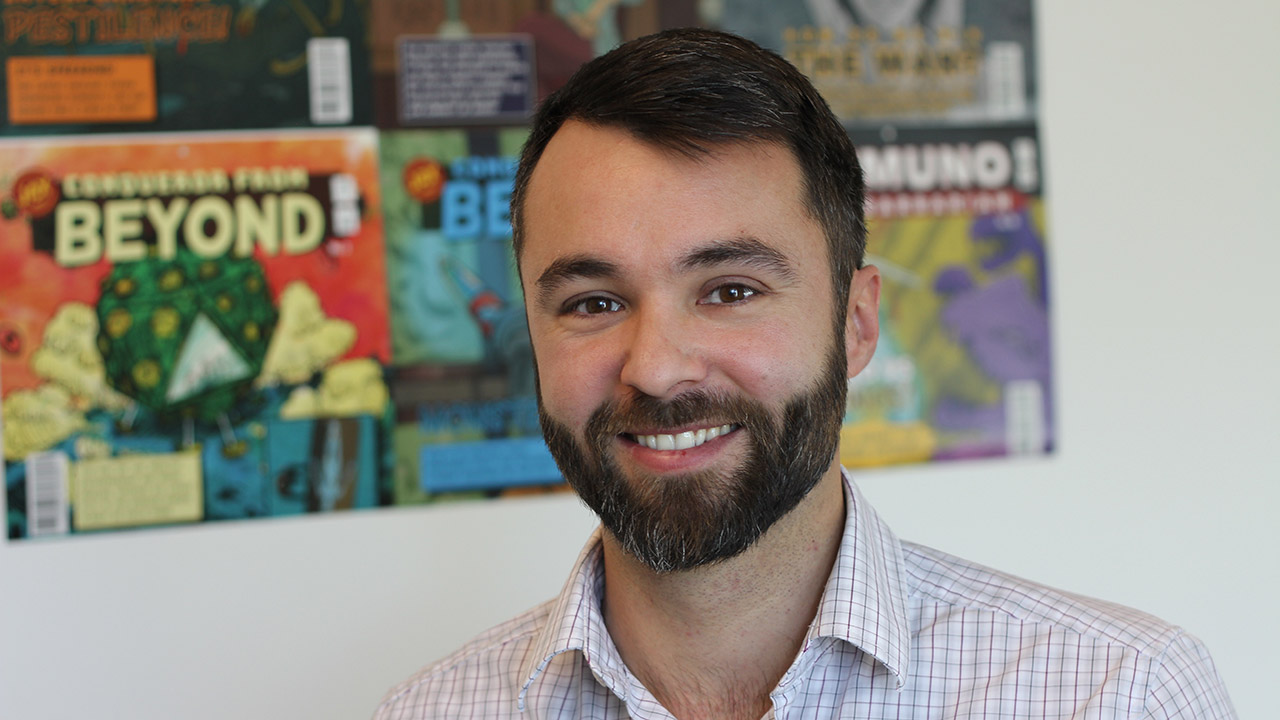Behind the scenes with Benoît Chambaron
Bio basics: Manager, comparative research, Sunnybrook Research Institute. [Comparative research is essential to the progress of human medicine. Researchers must study animal models when there is no complete alternative and to comply with government regulations. Animals allow us to study disease processes so we can understand those processes better and develop ways to stop or prevent them.] Previously worked at the Research Institute of the McGill University Health Centre. Completed his MBA and bachelor of business administration at the Université du Québec à Montréal. Born in France and immigrated to Canada at age eight. Joined SRI in June 2016.
What attracted you to SRI?
My mom was being treated here at the Odette Cancer Centre. I was back and forth for her treatment, so I knew the hospital a little bit. I heard about the opening and it was exactly what I was doing in Montreal. I thought it would be nice to expand my [work] experience.
What is a typical day for you?
At 7 a.m. we have a team meeting. There are 16 staff in total. We go through everything that needs to be done for the day and assign tasks. We try to plan ahead for the next few days so we can assist the researchers. We assist with [procedures] and writing their protocols. We meet with them to see what their next project is to ensure they have the right space and equipment, and to see if people need to be trained.
We start early to have the room free for the investigators to do their work. We do the husbandry of the animals (feeding, giving water and doing a daily health check) as early as possible so that by the time the researchers come in—I’d say the peak time is 10 a.m.—we’ve done the first check.
I do a walk-around once a day to talk to the researchers to see if everything is okay. Usually when I don’t hear anything, that means things are good. [Laughs.]
What are the challenges?
Building issues. We have such harsh weather—from super hot to very cold. That’s very demanding on the heating, ventilation and air conditioning. We have to be as proactive as possible to limit the variation of temperature in the rooms. Every room is monitored for temperature, humidity, the number of air changes per hour, air pressure in the room (positive or negative) and light. We’ve set parameters. Say the room has to be 21 degrees, plus or minus a few degrees; if it goes outside of that range, then there’s an alarm. I receive either a phone call from the machine telling me there’s something wrong, or an email, depending on how high the alert is.
Also because research is such a large group, there are a lot of projects. It’s quite a challenge to be on top of all the different protocols. Some of my staff have been here for 10 years. They know the researchers and labs very well. For me, it was quite a huge learning curve to get to know the type of research that’s being done to understand better what type of help we can give.
How did you get into this line of work?
I did my animal health technology diploma when I was back in Montreal. I was always very curious about research. I asked my school if I could do a couple days in research just to see how it is, and I fell in love with the people working there. The researchers were so nice and focused on helping people—trying to find a cure for a disease, or new ways of doing surgery to help people live longer or a better life. I was very amazed by that.
How do you like living in Toronto?
I really like it. It’s so vibrant. There are so many people from different places in the world. I think it’s amazing to see all the diversity. The city’s big and clean. There’s not as much construction as there is in Montreal.
What do you like to do outside work?
I walk a lot around the city. That’s actually how I started learning [more about] Toronto. I would take the shuttle back to Women’s College [Hospital], and from there I would just walk [home]. I live in Riverdale. It’s almost an hour-long walk if I walk slow. I always take a different route so that I get to know the city.
I travel a lot. Because my family’s in Europe, I go to Europe a few times a year. As long as I have a long weekend, I try to go away. Almost every week I’m on a plane, but most of the time it’s to go back to Montreal. Last year I went to China and Spain, and [to] France a couple of times. I also went to San Diego, California.



